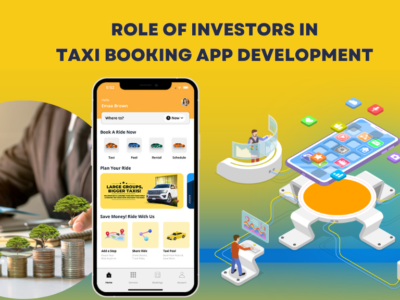7 ways to successfully launch your website in multiple countries
they outline what you need to consider when targeting new markets online, including design, content, and changes to ecommerce.
Thank you for reading this post, don't forget to subscribe!So, you’ve started up a successful business in your home country and want to expand overseas?
While there are some best practice guidelines that can be carried across international borders, one size certainly doesn’t fit all when it comes to launching your website abroad. If you’re thinking of making the leap, here’s where you need to start.
1) Research the law in your target country
Before committing any budget to launch your website abroad, it’s worth investigating any legal issues that could arise. What may be acceptable to one country might not be in another, even within the EU.
Legislation for websites can even differ within some countries, for example, in the US certain rules apply at state level, but in other parts of the country they do not.
The two main things to consider in this area are: whether your product or service is legal and whether the country you are targeting is ‘internet friendly’.
With regards to your product or service, it can be more complicated than it appears. For example, a product can be allowed by EU law but still forbidden on a country level. Make sure you understand the law as it pertains to your product or service before making your move.
Another challenge is the ‘internet friendliness’ of your target country; some governments impose internet censorship, which could make it harder for businesses to promote their websites there. There may also be places that are less accepting of foreign businesses in general, particularly where they don’t have an office there. This is worth talking over with a local expert if you can.
2) Suss out the competition
You might be the market leader in your home territory, but a change of scene brings with it a raft of different players. Understanding who else is out there in the countries you are targeting is essential as you can look at the tactics they are employing online and learn from them.
3) Get advice from a native speaker
Direct translation (even when launching a website in another English-speaking country) is inadvisable because it doesn’t take into account cultural differences and there might not be a direct equivalent of a word in that language. For example, ASOS chose to leave some English phrases in place on its French website, such as the word ‘blazers’, which is used colloquially, and its US site offers ‘sweaters’ in place of the ‘jumpers’ offered in the UK.
When it comes to keyword searches, the insight of a native speaker is particularly valuable since they understand the cultural significance as well as the functional properties of words. They will naturally include keywords that carry the correct meaning and concept. You only have to look at the ‘cheeky Nandos’ furor to see how different words are interpreted (and amusingly misunderstood) between countries – even those who purportedly speak the same language!
It’s also worth considering device usage in your chosen country – search behavior can differ from desktop to mobile, so different keywords should be targeted for each platform.
4) Localise your SEO strategy
While Google is globally ubiquitous, it’s not the only player. For example, in Russia Yandex is the largest search engine, with about 60% of the market share, and in the Czech Republic Seznam was the largest search engine, until recently.
Not everyone searches in the same way, and so it’s worth considering how differently people might be searching in your chosen country. Once again, it helps to have local support in this area to identify what the most important features are from their point of view, so you can use this to put together a strategy to target them.
Where to host and how to target your website is a very complex issue and depends on the size of your business and the countries you’re looking to expand to. In an ideal world, you would have one domain with content in different languages for different countries on it that will be easily recognized by search engines. Internationally recognized domain names like .com mean that customers in different countries will recognize your website’s name.
There are a number of ways you can structure websites, depending on your needs, and this SEO Moz video offers a basic guide.
5) Adapt your design for the audience
You should take into account how your website design will appear to your audience. For example, French online retailers display more prominent pricing and larger calls to action than UK websites, which focus more on the product itself.
It’s also worth considering the colors you use – if you have a competitor in that country using a similar color to you, is it worth a chance to avoid confusion? User testing your proposed design and navigation on a local audience before launch could save you a lot of hassle in the long term.
6) Consider the customer journey
Some of the basics of how and when people use your site will be different in a new country.
Let’s start with the ‘when’; dates and times are displayed differently between countries. In the US, for example 10/12/15 means 12 October 2015, but in the UK this means 10 December 2015. In Japan, they display the year first, then month and then day, so to them this would mean 15 December 2010. Make sure you always display dates and times in local formats, so as not to confuse users. This is especially important if you’re delivering products, for example, and they need to know delivery dates.
When it comes to paying, you should also ensure that prices are displayed in the local currency – the last thing users want to do is have to convert the prices into their own values to make a decision. If you’re operating an ecommerce site, it’s essential to ensure that you use that country’s preferred payment preferences – your customers’ needs should influence the payment methods you offer. For example, in Germany ‘invoice’ is the most commonly used payment method and 58% of online customers order online and pay afterwards. German consumers prefer it because they have the peace of mind of knowing they can pay upon actual delivery of goods or services – but it does present a higher risk to online merchants, which you’ll need to factor in if you’re doing business there.
7) Provide good customer service
Once you’ve managed to attract customers in your chosen country, don’t forget that you still need to talk to them. They may have questions about your products or services before purchase, or issues or complaints afterward. It’s essential that you can communicate effectively with them. Having a local address or telephone number can help customers feel that they have the necessary support to make a purchasing decision. If you are offering a live chat service, you should ensure that you can offer it in the local language.
Launching a website abroad requires careful planning if you want to make sure you’re putting across the right message. In most cases, you’ll be up against local competitors who are already doing a lot of these things automatically, so you will need to put in extra work to compete against them.
When done correctly, however, it offers a fantastic opportunity for small businesses to grow – provided you are prepared for it.











